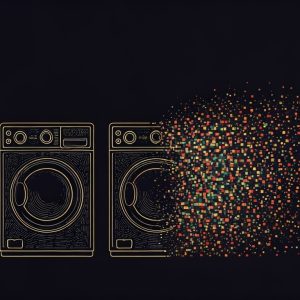Sun Microsystems Inc has rechartered its chip business to pull out all the stops and go up against Intel Corp and all of the RISC competitors to ensure that Sparc is one of the survivors after the smoke of the chip wars finally clears in about three years’ time. Sparc, which hasn’t been a performance leader for some time, is preparing to take on the likes of Hewlett-Packard Co’s Precision Architecture RISC and Digital Equipment Corp’s Alpha, both currently performance darlings, in a new struggle for leadership, according to Chet Silvestri, the recently annointed head of Sun’s Sparc Technology Business, the firm’s chip development centre. As a result, Sun, which is now sorting through its engineering projects to see what can be done to move the effort forward, will probably begin emphasising its anticipated 64-bit 167MHz 275 SPECint 92 UltraSparc-I chip, code named Spitfire and due in early silicon in the fourth quarter. It will also attempt to accelerate the pace of development for its follow-on UltraSparc-II, currently due the end of 1995, but not apparently the UltraSparc-III, a 600+SPECint 92 chip, now due the end of 1996, which could actually be the beginnings of the unnamed next-generation Sparc line. Silvestri says he’s been told to put HP, DEC and MIPS out of business, beat the PowerPC and put a dent in Intel. He sizes up PowerPC, the current contender, as eminently beatable, comparing it to Windows NT because it’s over-hyped, will fail to meet expectations and will get on everyone’s (AT)*&% list. He is also relatively unafraid of Intel, hoping, he says, that it will go ahead with its promise to drag the baggage of the iAPX-86’s legacy into the future with the P6 and P7. Each UltraSparc is estimated to deliver twice the performance of whatever Intel offers at the time. This means UltraSparc-I is being touted as having twice the performance of the P6, which Intel has said it will sample in the fourth quarter. Sun’s plans to make Sparc as ubiquitous as possible naturally involve renewed efforts to increase unit volumes, hoping to grow the non-Sun Sparc business from the 20% to 25% of these last couple of quarters to 50% of the total in three years, according to the acting head of Sparc Technology Business marketing, Derek Meyer. Indicative of that necessity, Sparc Technology last week made yet another attempt to shore up its clone business, which has suffered in the past from Sun’s predilection for stomping on competition that it itself created.
Rechristened
For the first time, Sun will offer cloning design kits for making hardware that is identical to its own, beginning with the blueprints for two unannounced Sun products due in April: Kodiak, also known as the SparcStation 20, a faster version of the Sparcstation 10, and Aurora (alias the Sparcstation 5), the MicroSparc-II edition of the low-end LX and Classic boxes. Both are meant for high-volume manufacture with anti-Pentium Aurora, available with leading edge graphics options, high-speed networking and collaborative multimedia capabilities. Axil Workstations Inc is apparently a customer for both. Sparc Technology is also making available the support logic in Gypsy, its new MicroSparc-II-based nomadic workstation, now officially rechristened Voyager. These devices include a power management controller, monochrome and colour liquid crystal diode display controllers and a single-chip PCMCIA controller. Meanwhile, Sparc Technology announced it is sampling 85MHz and 100MHz versions of the MicroSparc-II. (The MicroSparc family is intended to stay abreast of Pentium’s power with these chips paralleling Intel’s new 90MHZ and 100MHz models. There are great hopes for MicroSparc-III as a low-cost mass chip). It also has a three-chip 70MHz MicroSparc-II chip set priced at $540 in quantities of 5,000. Of all the Sparc makers that started out a few years back, there are only a few of any significance left: ICL Plc, Axil, Tadpole Technologies Plc, Tatung Co and perhaps TriGem Computer Corp, with increasing hopes for Toshiba Corp and Fujitsu Ltd. Sparc Technology beli
eves by the end of the year it will sign other channels in the US and Asia and there is also talk of moving into Eastern Europe.






